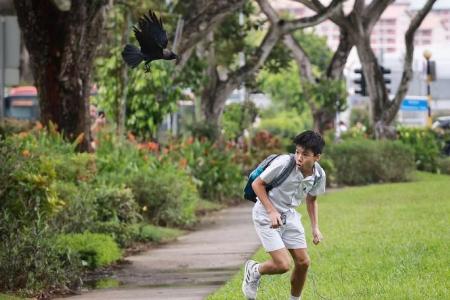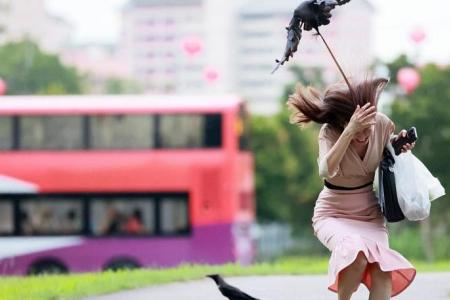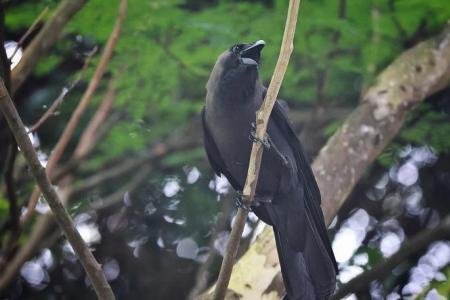NParks to cull crow population in Bishan block following reports of attacks
The National Parks Board (NParks) said it is working with the Bishan-Toa Payoh Town Council to reduce the crow population at Block 110 Bishan Street 12 following reported attacks by the birds over the past week.
Dr Adrian Loo, group director of wildlife management at NParks, said it has been monitoring the area for crows’ nests since Feb 7 and have started removing them, as well as pruning trees and trapping crows.
The trapped birds will be euthanised.
Dr Loo said: “House crows are not native and are an invasive species in Singapore, posing a threat to our native biodiversity... Additionally, they are particularly protective of their young and may attack when the chicks are in the nest or when they sense that their young are threatened.”
To ensure that population control is carried out in a humane and safe manner, Dr Loo said NParks uses suitable and science-based depopulation techniques such as removing food sources and modifying habitats to make it less suitable for the birds, among others.
The crows were not culled by shooting, as was done in the past. Crows were shot dead in 2020 near Block 642 Desker Road after complaints of attacks.
He added: “The public can help to mitigate population growth and congregation issues by not feeding birds and disposing of food scraps properly.”
On Wednesday, NParks started a joint outreach programme with the Bishan-Toa Payoh Town council, its associated residential committees, and the National Environmental Agency.
They put up posters in lifts and conducted home visits to warn the public against feeding birds.
Shin Min Daily News reported on Feb 14 that the crows had attacked 10 people in a 20-minute span at Block 110 Bishan Street 12 earlier this year.
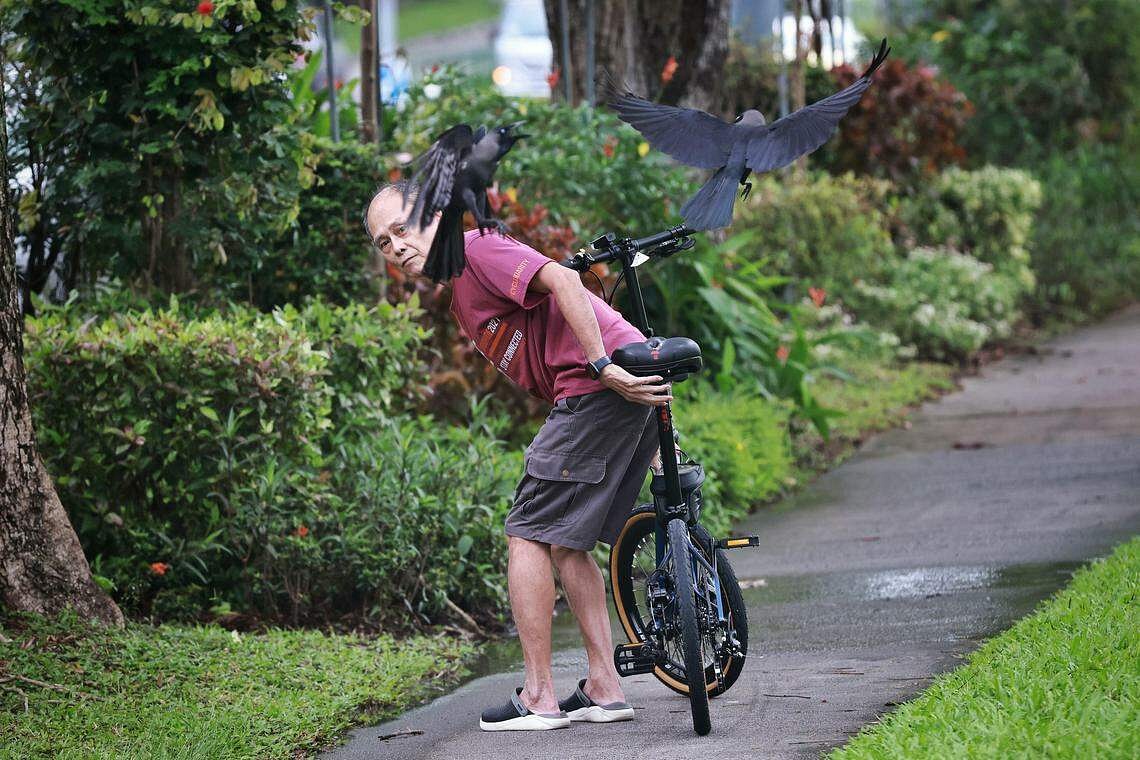
While checks by The Straits Times on Wednesday found that the attacks have mostly ceased, people there said they have been victims of the crows, which either flew close to them or hit them.
Mr Tan Soo How, 65, a part-time events assistant who lives there, said he had been attacked on two occasions.
His first encounter was in the carpark about a week ago, when one dived and swooped over him.
“I got the feeling that they would attack me because they were looking at me. I was thinking, ‘Please don’t come and attack me.’ In the end, they really did.”
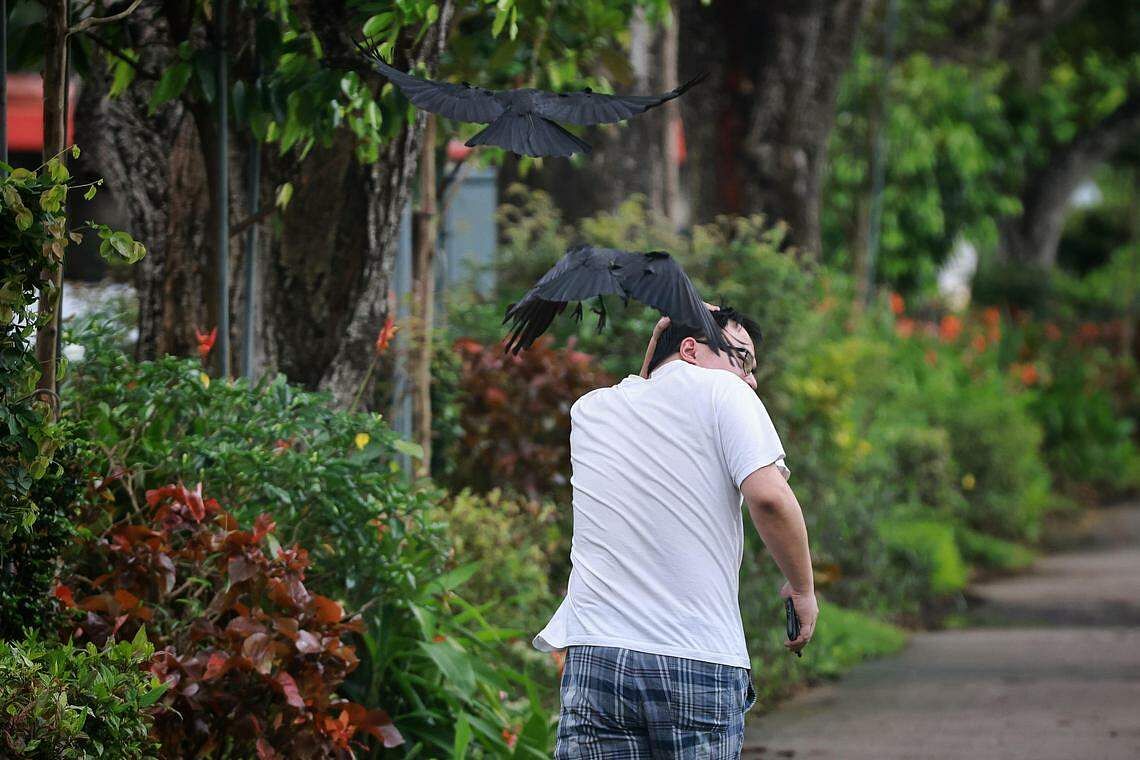
A few days later, two crows started circling over him. This time, he picked up a stick to chase them away.
Mr Michael Man, 49, a sourcing director at a company in the area, said he was attacked by crows on Monday on his way to lunch.
While he was not injured during the attack, Mr Man said he was shocked.
“It hit quite hard. You wouldn’t imagine that a bird would be able to hit that hard,” he added.
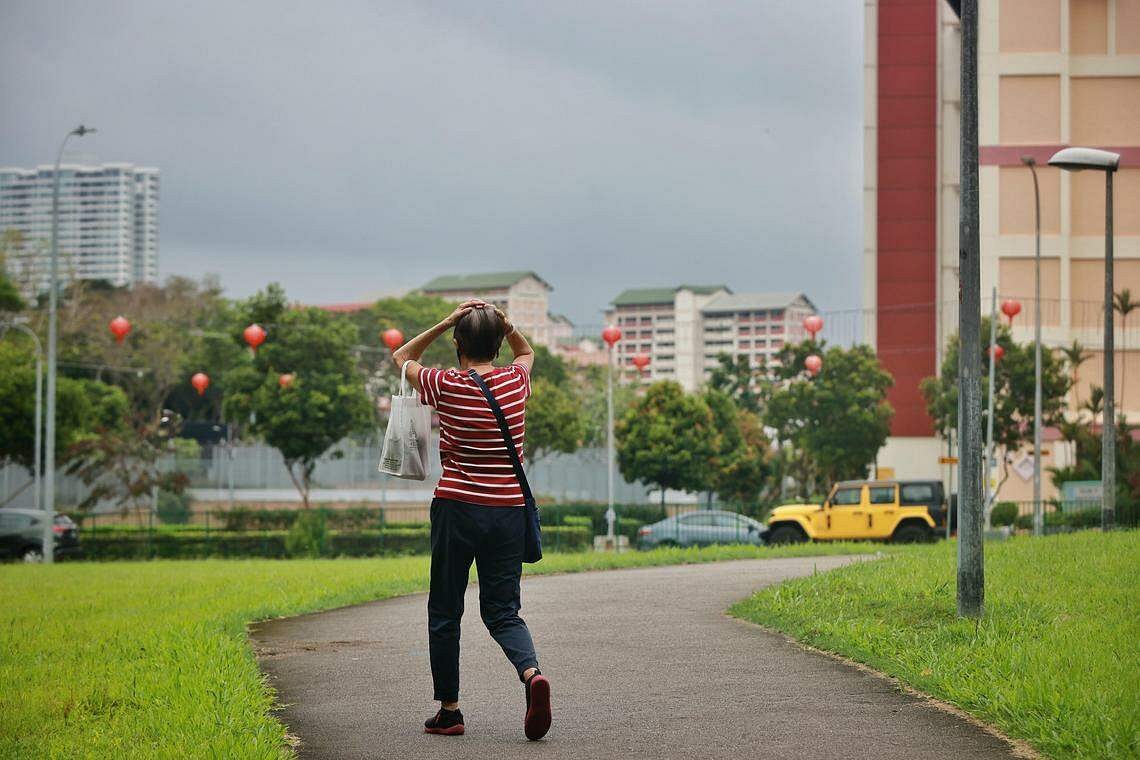
But both men said they did not want the crows to be harmed or killed.
Said Mr Man: “They’re wildlife. What do you want to do about them? There’s no point in harming them.”
Residents have since adopted countermeasures, such as shielding themselves with an umbrella and avoiding outdoor paths where the crows have been frequently spotted.
Ms Anbarasi Boopal, chief executive of the Animal Concerns Research and Education Society (Acres), said that crows mostly attack to protect their young.
“In (some of the images online), a bird can be seen on the ground... probably a fledgling which has left the nest and is learning to fly... Crows are protective of their young and will guard them when they are learning to fly. ”
She added that because urban birds such as crows, pigeons and mynahs nest and feed close to residential areas and human food sources, this territorial behaviour of protecting their young as they learn how to fly is easily noticed.

Ms Boopal said that to control crow numbers, the focus should be on how food waste is disposed because crows are excellent scavengers.
“Removing indirect food provision and better food waste management are the only sustainable long-term solution for such urban bird population issues.”
Get The New Paper on your phone with the free TNP app. Download from the Apple App Store or Google Play Store now

